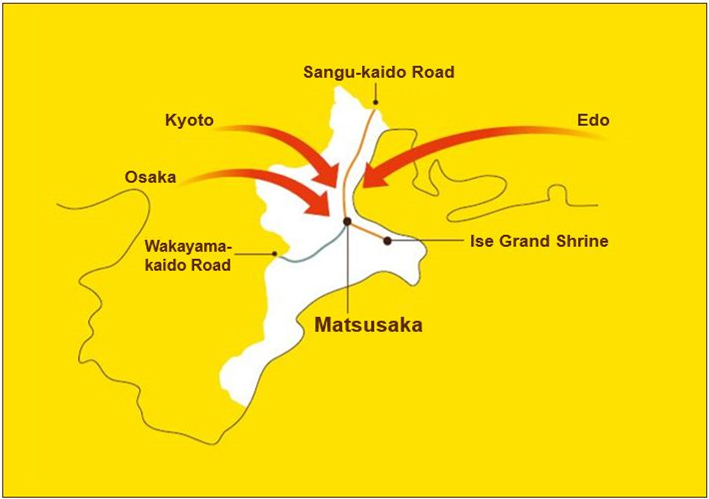Matsusaka's Free-Spirited Mindset
People have lived in the Matsusaka area for thousands of years, and it became a key point on transportation routes from the Nara period (710-794) onward. During the Edo period (1603-1868), Matsusaka was a bustling post station town on the Sangu-kaido Road, the pilgrimage route to the Ise Grand Shrine.

Open trade in the area stimulated commerce, and because the town was detached from its administrative domain in Wakayama, there were few samurai to impose restrictions. This, along with the vast amounts of information received from Edo (now Tokyo), Kyoto, and Osaka, heightened merchants' free-spirited mindset, and produced many notable people, including Mitsui Takatoshi and other Matsusaka merchants, and the scholar Motoori Norinaga.
Vast amounts of information
came to Matsusaka from across the country via the Sangu-kaido Road, leading to the development of numerous cultural practices and products, and great historical figures.
The road to Ise was originally near the coast, but Gamo Ujisato, who founded Matsusaka in 1588, moved the route nearer to Matsusaka Castle. He also built the Matsusaka Great Bridge over Sakanai River, turning the Sangu-kaido Road into an important transportation route. As a result, pilgrims to the Ise Grand Shrine began passing through the main part of Matsusaka, which led to the development of new cultural practices and trends.
